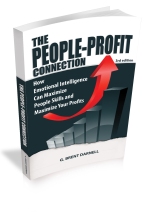
Simon Sinek blew up the internet with his rant on Millennials. I can’t tell you how much I disagree with much of what he said. I’ll take his points one at a time and discuss them.
He said that everything that is wrong with Millennials can be summed up in four distinct areas:
- AREA 1: Poor Parenting: Sinek claims that the parents ruined this generation through entitlement where everyone gets a trophy. I have questioned many Millennials about this and most seem confused. Many of the ones I talked to did not receive the many trophies that are continually referenced by Baby Boomers. Do you know any Generation X folks and Baby Boomers with poor parents? Why are we targeting Millennials? Baby Boomers claim that Millennials are lazy, but many of the Millennials that I know work incredibly long hours, it’s just not during the traditional work hours. They are constantly working! Some examples of “lazy” millennials from Inc. Magazine’s Top 20 Most Influential Millennials:
1. Mark Zuckerberg
Just about everybody has heard of Mark Zuckerberg by now. The famous millennial created Facebook, the most powerful social media platform ever – and raked in a few billion dollars along the way. Barely in his 30s he’s already spent considerable sums giving back to cure diseases and help civilizations make better decisions across health care and education.
3. David Karp
David Karp created Tumblr, a site famous among many millennials who use the blogging platform daily. The site is normally used for sharing art and images, but it also acts well for short form blogging and sharing ideas.
4. Ben Silbermann and Evan Sharp
Continuing the theme of ultra-famous social media and content sharing sites, Ben Silbermann and Evan Sharp created Pinterest. Pinterest has grown into a massive business with these two guys at the helm.
5. Jessica Alba
Yes, that Jessica Alba. Actress turned entrepreneur, Alba created The Honest Company. A company that pushes ethical and non-toxic products, The Honest Company is valued at well over $1 billion.
9. Mike Krieger and Kevin Systrom
Instagram, created by Mike Krieger and Kevin Systrom, is the immensely popular photo sharing social media app. The app has a particularly large audience with millennials and the upcoming Generation Z.
10. Brian Chesky
Founder of Airbnb, Brian Chesky has managed to disrupt and revolutionize the way we approach travel, room and board.
- AREA 2: Tech: Sinek says that Millennials are addicted to social media. Do you know any Baby Boomers or Generation X folks who are addicted to social media? How often do you check Facebook each day? Why is this a Millennial issue? I agree that there should be periods where you remove devices from your world for periods throughout your day. We recommend this to everyone, not just Millennials.
- AREA 3: Impatience: Sinek claims that this instant gratification world translates into Millennials expecting instant career mobility and instant intimate relationships and joy in their life and work. Isn’t this true for our society and not just Millennials? This “chases shiny objects” emotional profile (high flexibility/low impulse control) shows up in some of our participants in our programs and it isn’t just Millennials. There is an upside to this profile. These folks are constantly looking for more possibilities and different ways to do things. Why do we always focus on the negative?
- AREA 4: Environmental: Sinek says that corporations don’t care about these young people and don’t give them the resources (training in social skills) to find joy and fulfillment in their work and their relationships. It’s the company’s responsibility. That’s the only thing that Sinek said that I agree with. I do believe that most companies care about their people. The key is to provide these resources and create organizations and projects that are relationship driven and collaborative.
Look at the following quote and try to guess who said it and when it was said:
“Our (sons’ time) was worse than our (grandsons’). We their sons are more worthless than they: so in our turn we shall give the world a progeny yet more corrupt.”
The answer? Horace, Book III of Odes, circa 20 BC
This is nothing new. This issue has been going on for millennia! This is not a generational issue. This is a communication/people issue. We have to get to know our employees and co-workers regardless of their age, accentuate their strengths and help them with their development needs. Why don’t we talk about the positive stereotypes about Millennials? They are incredibly smart, socially conscious, they get things very quickly, they can solve problems and figure out incredibly difficult issues in a short period of time. They work smarter, not harder. They are great with technology.
Here’s a cool video with a response from Millennials:
My advice to Millennials? Get off the phone, tablet, and computer every once in a while and seek out some human interaction and face to face discussion. This will help you in your life and career. (By the way, this will help EVERYONE!)
My advice to the Baby Boomers? Quit complaining about Millennials. Get to know them and create a work environment that exploits their strengths. Don’t worry about their time on their phones or Facebook. Be clear on what you want from them and give them autonomy and purpose.
Stay tuned for our next online course will be a guide on how to handle these generational issues. Click here to check out our other online courses that will ensure more successful projects. If you would like two free white papers and two of my bestselling books, go to brentdarnell.com/whitepaper and sign up!



 Posted by Brent Darnell
Posted by Brent Darnell 




 Isn’t this just another management fad?
Isn’t this just another management fad? Can emotional intelligence be learned?
Can emotional intelligence be learned?
